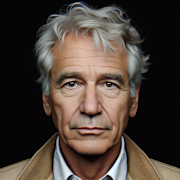The Lord of the Rings: The Two Towers (2002)

Released in 2002, The Lord of the Rings: The Two Towers is the second installment in Peter Jackson’s epic fantasy trilogy based on J.R.R. Tolkien’s beloved novels. Picking up where The Fellowship of the Ring left off, this film continues the journey of Frodo Baggins and the Fellowship as they face new challenges and enemies in their quest to destroy the One Ring. With stunning visuals, heart-pounding action sequences, and a richly layered story, The Two Towers is widely regarded as one of the greatest fantasy films of all time. In this blog post, we will delve into the themes, characters, and production of this cinematic masterpiece.
The Two Towers: Themes and Symbolism
At its core, The Two Towers is a story of hope and perseverance in the face of overwhelming darkness. The theme of the individual vs. the collective is explored through the parallel storylines of Frodo and Sam’s journey to Mordor and Aragorn, Legolas, and Gimli’s efforts to defend Rohan and Gondor. The film also delves into the corrupting influence of power and the importance of friendship and loyalty in times of crisis. The iconic quote “Even the smallest person can change the course of the future” encapsulates the film’s central message of the power of ordinary individuals to effect change in the world.
Symbolism is also prevalent throughout the film, with the One Ring serving as a metaphor for the allure of power and the destructive consequences of greed. The contrasting landscapes of Middle-earth, from the lush forests of Lothlórien to the barren wastelands of Mordor, reflect the overarching themes of light and darkness, hope and despair. The imagery of the two towers – Barad-dûr and Orthanc – represents the opposing forces of evil and good, with the characters’ choices determining the fate of Middle-earth.
Character Development and Performances
The Two Towers features a sprawling ensemble cast, with each character undergoing significant development over the course of the film. Frodo’s inner struggle with the Ring’s influence and Sam’s unwavering loyalty are at the heart of the story, showcasing the strength of their bond in the face of temptation and danger. Aragorn’s growth from reluctant leader to heroic figurehead is a standout arc, as he grapples with his own doubts and fears while inspiring those around him.
The performances in The Two Towers are universally acclaimed, with Elijah Wood, Sean Astin, and Viggo Mortensen delivering standout turns as Frodo, Sam, and Aragorn, respectively. Wood captures Frodo’s internal conflict with subtlety and nuance, while Astin brings emotional depth to Sam’s unwavering devotion. Mortensen embodies Aragorn’s mix of strength and vulnerability, creating a complex and compelling protagonist. The supporting cast, including Ian McKellen as Gandalf and Andy Serkis as Gollum, also shines in their respective roles, adding layers of complexity to the film’s rich tapestry of characters.
Cinematography and Visual Effects
One of the most striking aspects of The Two Towers is its breathtaking cinematography and visual effects, which bring Tolkien’s world to life in vivid detail. The sweeping landscapes of New Zealand serve as the backdrop for Middle-earth, with Peter Jackson’s dynamic camera work capturing the epic scope of the story. From the sweeping vistas of Rohan to the towering spires of Isengard, each location is rendered with painstaking attention to detail, immersing viewers in the fantastical realm of the film.
The visual effects in The Two Towers set a new standard for fantasy filmmaking, with groundbreaking techniques used to bring creatures like the Ents and the Uruk-hai to life on screen. The character of Gollum, portrayed through motion capture by Andy Serkis, is a standout achievement, blending CGI and performance capture to create a fully realized and emotionally complex character. The film’s epic battle sequences, including the Battle of Helm’s Deep, are a masterclass in choreography and scale, showcasing the ingenuity and artistry of the filmmakers.
Legacy and Impact
The Two Towers was a critical and commercial success upon its release, earning rave reviews and multiple Academy Award nominations, including Best Picture. The film’s impact on the fantasy genre cannot be overstated, with its influence seen in subsequent adaptations and films. Its success paved the way for the final installment in the trilogy, The Return of the King, which would go on to sweep the Oscars and become one of the most acclaimed films of all time.
The enduring legacy of The Two Towers is evident in its continued popularity among fans and critics alike, with its themes of friendship, sacrifice, and heroism resonating with audiences of all ages. The film’s message of hope and courage in the face of adversity remains as relevant today as it was upon its release, serving as a timeless reminder of the power of storytelling to inspire and uplift.
In conclusion, The Lord of the Rings: The Two Towers stands as a towering achievement in the realm of fantasy cinema, blending epic storytelling, memorable characters, and groundbreaking visuals into a masterpiece of modern filmmaking. Its enduring legacy and impact continue to be felt to this day, solidifying its place as a classic of the genre and a testament to the enduring power of Tolkien’s imagination.

Desmond van der Walt
Journalist
More From Classics Authority Movies

Movie
Father of the Zombies: Remembering George A. Romeros Classic Creations

Movie
The Thin Red Line (1998)

Movie
Dial M for Murder (1954)

Movie
City of God (2002)

Movie
From Script to Screen: The Art of Adaptation in Classic Cinema

Movie
The Leopard (1963)





